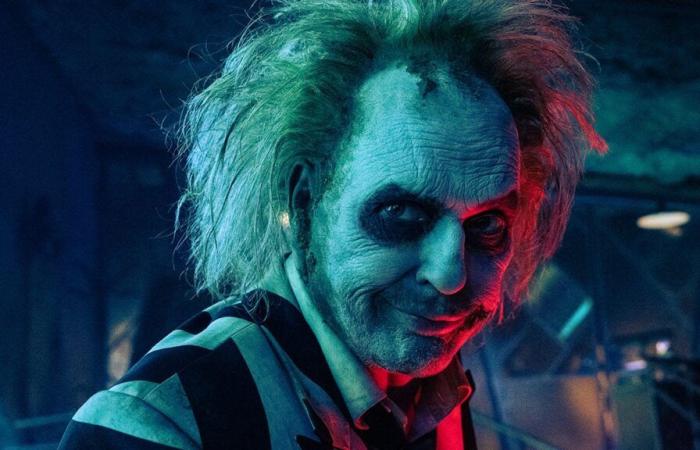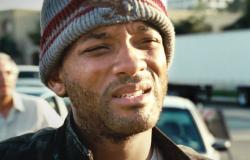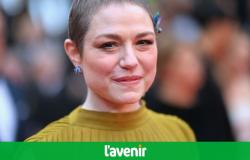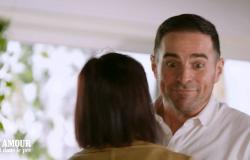In the pantheon of obligatory legacy sequels, Beetlejuice Beetlejuice is perhaps the least necessary – after the first Beetlejuicethere was little story or worldbuilding left to explore (though that didn’t stop the animated series and years of sequel speculation). But that’s part of why Tim Burton’s follow-up to his beloved 1988 horror-comedy works. At no point does the 36-years-later revival tout itself as capital-I “Important,” even though it confers a sense of weight and grandeur on existing characters and events. While it features a whole lot less story than the original – which got by on its wry tone and imaginative production design despite being narratively insubstantial – each decision Burton makes here is simply geared towards cartoonishly macabre fun in the vein of its predecessor. It’s fine – at times, it’s even charming – and it doesn’t need to be much more than that.
Decades after her initial brush with the strange and unusual, former antisocial goth Lydia Deetz (Winona Ryder) now uses her sixth sense to host the popular paranormal TV series Ghost House. With the help of her over-eager boyfriend/manager Rory (Justin Theroux), she’s become a minor celebrity, but the past still has a hold on her, and not just because she sports the same updo and spiky fringe as when she was a teen. Anytime Lydia spots a black-and-white striped outfit, she has momentary flashes of the undead bio-exorcist and sex pest Betelgeuse (Michael Keaton), who tried to forcefully marry her in the first film.
However, Lydia’s problems are much more wide-ranging than the previous-movie-induced PTSD afflicting her counterparts in other legacy sequels, like the last two Scream movies or David Gordon Green’s Halloween trilogy. Her college-aged daughter Astrid (Jenna Ortega, speaking of Scream), who rejects her mother’s supernatural claims, is otherwise a mirror image of the moodier Lydia circa 1988; the death of Astrid’s father drives a further wedge between them. Lydia’s stepmother Delia (Catherine O’Hara) continues to be a self-absorbed concept artist, only now on a much larger scale. And her own father, Charles, has recently died a comically horrific death, which feels like a tongue-in-cheek dig at actor Jeffrey Jones, who played Charles in the original before being later brought up on child-pornography charges. The actor is, of course, not brought back for the sequel, but his character’s demise plays out at length via CGI-assisted stop motion.
On one hand, kicking Jones so overtly to the curb feels like a justified, metatextual middle finger to an actor whose crimes also retroactively taint Burton’s Ed Wood and Sleepy Hollow. On the other hand, it also draws attention to the fact that Burton hasn’t stopped working with composer Danny Elfman, the subject of multiple sexual harassment and assault lawsuits, whose signature, bouncy brass is as recognizable as his name in Beetlejuice Beetlejuice’s opening credits. Additionally, by virtue of this approach to Jones, no one really takes Charles’ death seriously – though a few characters pretend to for personal gain – which also proves somewhat awkward. After all, his demise is what brings these scattered characters back together at the old Maitland/Deetz house, the setting of the first movie. Burton has always either danced around death or punctured it with humor, but Beetlejuice Beetlejuice does this while also sincerely attempting to confront grief, in the form of Astrid’s lack of closure with her dad. Coupled with the movie’s surprising in-world explanation for the absence of the Maitlands (ghost couple Adam and Barbara, played by Alec Baldwin and Geena Davis in Beetlejuice), it feels like the sequel is constantly on the verge of a more thoughtful and reflective approach to mortality, though it keeps zig-zagging away from this.
New Beetlejuice Beetlejuice Official Trailer Screenshots
However, its tonal mismatches are worth forgiving once the movie’s goofy supernatural antics begin. Betelgeuse, who hasn’t stopped pining for Lydia, still caters to deceased folks wanting to rid themselves of live guests in their former homes, and has now expanded his operation with the help of dozens of lumbering assistants with shrunken heads and engorged plastic eyes – just one of many delightful practical effects that makes Beetlejuice Beetlejuice an ideal gateway to the horror genre for younger viewers. It also happens that Betelgeuse’s long-dead and long-dismembered ex-wife, Delores (Monica Bellucci), escapes her confines in the afterlife and staples her body parts back together in the hopes of enacting revenge on him with her demonic, soul-sucking powers.
These plot threads don’t so much collide as they simply brush shoulders through coincidence – Bellucci, who’s fully committed to her character’s gimmick, has frustratingly little screen time – but each one is silly enough to warrant a chuckle. Willem Dafoe, for instance, plays deceased B-movie actor Wolf Jackson, whose obsession with playing a TV cop has led him to form a post-mortem “Ghoul Squad” made up of dead, blue-skinned police who might as well be asphyxiated Super Troopers. Wolf chases down rule breakers like Betelgeuse (or living people who force their way into the afterlife, as happens here), while coming up with cheesy action-movie quips on the fly. Dafoe is clearly off in his own movie, one that’s barely connected to the rest of Beetlejuice Beetlejuice – which, for instance, includes a romantic subplot for Astrid plucked from a Y.A. novel – but like most of the cast, the Spider-Man actor is having infectious fun.
Each decision Burton makes here is geared towards cartoonishly macabre fun in the vein of the first movie.
Such is the nature of the film as a whole, even though its puzzle pieces rarely fit. Characters and plot threads are often dropped at random – like Athena‘s Sami Silmane as a newly-dead graffiti artist – rendering them mere window-dressing or exposition. The afterlife bureaucracy isn’t so much a central joke this time as it is an incidental setting, but Burton and screenwriters Alfred Gough and Miles Millar (who, along with Ortega, make this as much a Wednesday reunion as a Beetlejuice sequel) provide enough by way of macabre puns and grisly visual gags to make its fleeting presence worthwhile. (A character casually saying they feel “light headed” is perhaps the movie’s funniest joke, for reasons best left discovered in the theater.)
The clash between trippy set design (à la Robert Weine’s The Cabinet of Dr. Caligari) and humdrum red tape is the defining feature of Beetlejuice’s underworld. But while it retains its analog charm, the sequel also features Burton’s attempts to update both his setting and vocabulary. Sometimes this works wonders, with self-absorbed characters like Rory using therapy-speak to hide their true intentions (Theroux is arguably the movie’s comedic secret weapon). Other attempts, unfortunately, aren’t nearly as character-centric; they play like half-hearted jabs in the direction of the internet, influencers, streaming, and social media, and are far less effective.
However, despite these uneven attempts to reckon with a changing world, Burton (perhaps rightly) neither tries to modernize Betelgeuse by subverting or “correcting” him, nor does he double down on the character’s creepiness by sending him chasing after another teenager. He’s still an obnoxious imp, and Keaton plays him with the same unapologetic mischief as in the first film, only this time he has a few more kooky, creature-feature tricks up his sleeve, rather than a penchant for underage girls – if only by virtue of the fact that Ryder is now in her 50s.
Granted, what’s lost in the process is the realization of one of the movie’s central themes, i.e. Lydia seeing herself in Astrid, and trying to protect her from experiences with which she now lives. But that’s far too serious a story for Beetlejuice Beetlejuice – a film in which characters brush aside the idea of “trauma” as some kind of trendy, modern invention – even though it might arguably be the correct one. It’s a silly little sequel to an equally silly original, and it’s hard to imagine wanting or needing much more from it.






